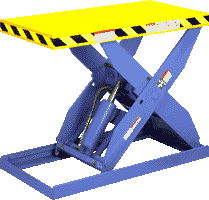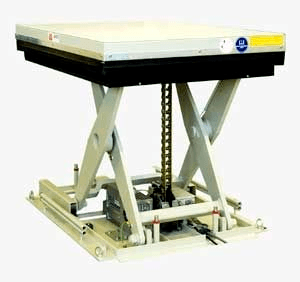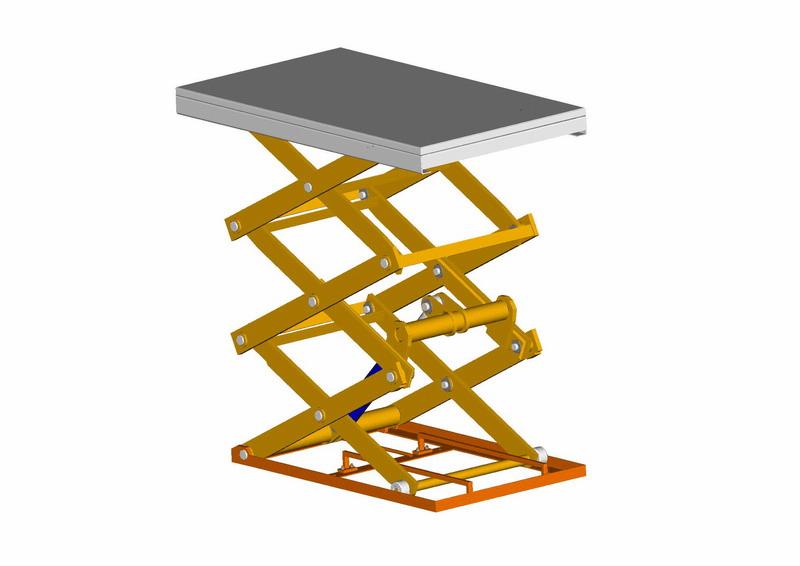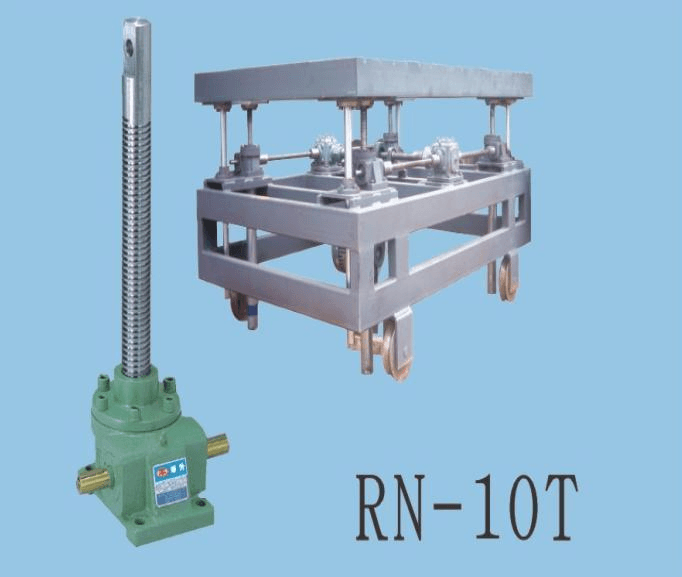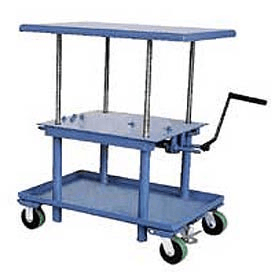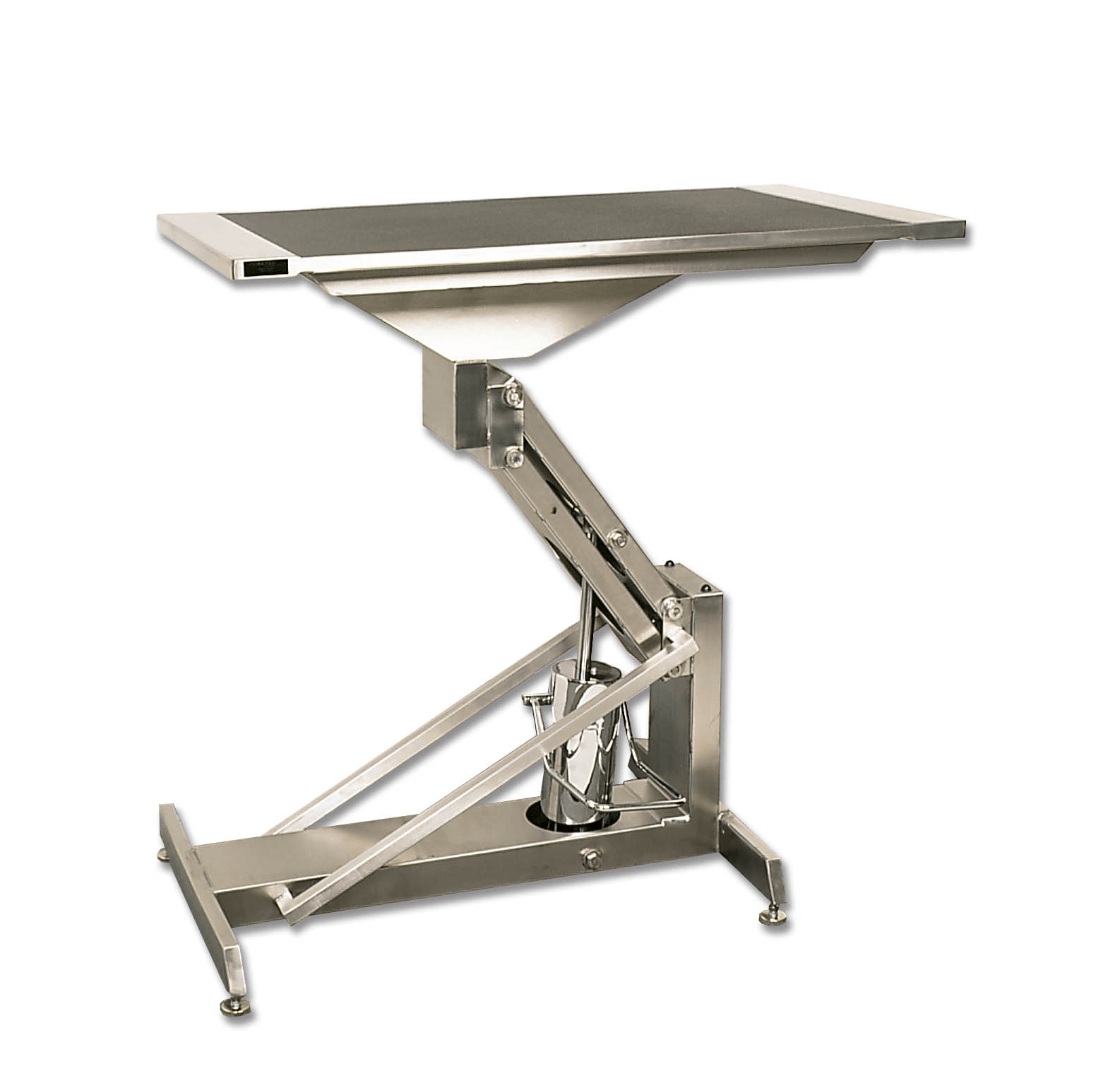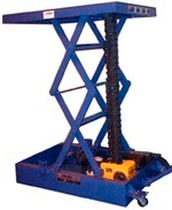Lift Tables Information
Lift tables are devices that allow materials and workpieces to be raised and lowered to ergonomic and accessible heights for specific tasks or purposes. Despite its exclusive function lift models vary by size, capacity, elevation, and actuation.
Operation
Lift tables find occupation in many workshop and warehouse settings where small-scale mechanical ascent and descent for objects is optimal. They provide an intermediate mode of relocation for materials; they are stronger and more stable than human handlers while in forms smaller than that of forklifts or hoists, though they do not supplant the need for either.
The four most important considerations when deciding upon a table lift are.
Capacity: The maximum weight the table is suitable to burden. Tables capable of lifting 5 [short] tons or more are common.
Size: The physical dimensions of the lift table.
Stroke: The elevation capability of lift table, from contraction to full expansion.
Operational manner: The power source and mechanism providing lift to the table. See 'Types of Lift Tables' below.
Lift tables are often manufactured with wheels allowing operators to convey items at their discretion, and wheels are typically pressurized inner tube or urethane caster in design. Wheeled tables typically feature a handle for safe grasping as well as a floor lock to temporarily immobilize the table. Elevation control is usually provided by a hand or foot control, and some models may feature electronic integration. Versions that also feature a tilting table will rely on similar interfaces to determine the pitch of the table plane. Adjustable-speed ascent and descent can be popular features when dealing with dynamic, uncentered, or shifting loads such as liquids. Such loads also benefit from an integral counterbalance and retainment edges. Finally, models incorporating a carousel into the design allow operators to rotate cargo without unloading.
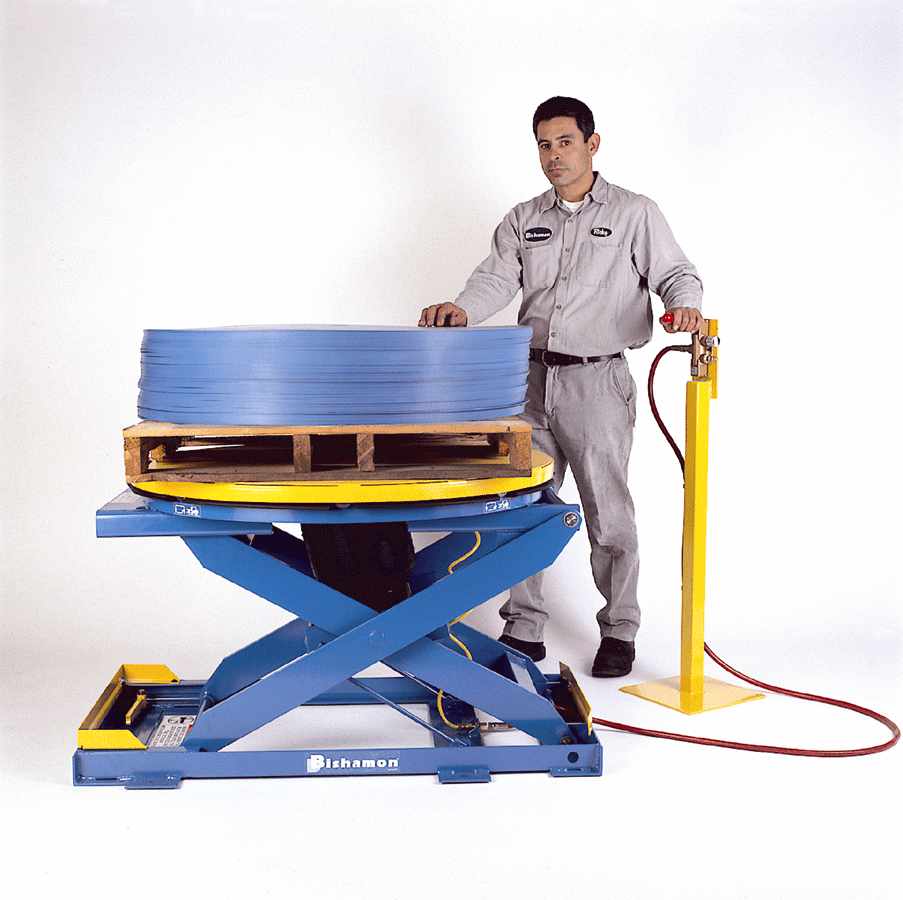
Types
Power Source
Typically power is only supplied to the lift table when elevating the platform. Descent is accomplished by the use of a purge valve or slow-release mechanism.
| Manual | Lifting is powered by a crank, pump, racket, or screw that relies upon the operator for stimulation. This is prominent in light-duty lift tables, but may be suitable for heavy or high-volume loading. |
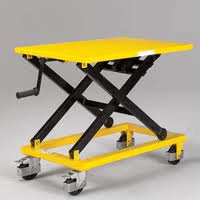
|
| Pneumatic | Elevation is accomplished by the use of a pressurized air cylinder in conjunction with a compression mechanism, or more rarely an air spring. |
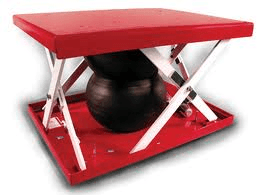
|
| Hydraulic | Pressurized hydraulic fluids power a linear actuator to raise the table. An accompanying hydraulic pump is required. |
Image credit: Lift Products Inc. |
| Electric | Electric motors provide a rotational power source which can power elevation with the use of a mechanical advantage, such as a rack/pinion drive or a chain lift. |
Image credit: Direct Industry |
Lift Mechanism
The below lifting mechanisms are not design-exclusive and two types of lift mechanism can be utilized to provide the necessary raising.
| Scissor | Scissor lifts are by far the most common type of lift table. The power source collapses the base of a pantograph to extend the table supports. The stroke of the lift can be changed dramatically by increasing the number of supports while not requiring an increase of power. |
Image credit: Lift Comp |
| Screw | Relying upon the helical thread of a screw, the table is translated along the length of the screw as it rotates. |
Image credit: Nosen |
| Rack & Pinion | Vertical locomotion is provided by the drive of a rack (gear) and its related pinion (essentially a linear bar with mating teeth). The rotation of the rack moves the table along the track provided by the pinion. |
Image credit: CNC Router Parts |
| Telescoping | Linear actuators are stored within the hollow cavity of a larger cylinder, sometimes in several sections, creating a small footprint in retracted form.. |
Image credit: Global Industrial |
| Articulated | Articulated lift tables have jointed arms that are extended by the use of linear actuators. These can typically offer some horizontal movement in addition to vertical elevation. |
Image credit: Forever Stainless Steel
|
| Chain & Sprocket | A rotating sprocket with a chain drive oriented vertically can supply the required force to raise the lift table. |
Image credit: Direct Industry |
Lift Table Safety
Some designs will feature integral safety features to prevent worker injury.
Release lock: in the event of a malfunction while extended, the table locks and must be lowered by the activation of a manual auxiliary release. This prevents damage to the load and injury to nearby workers.
Pinch guard: a underlying, pressure sensitive device determines when objects are compromising the table's ability to compress and immediately halts the tables descent.
Bellows: a skirt of rubber or vinyl surrounds the lift table to prevent objects, debris, or contaminants from intruding upon the lifting mechanism. It keeps personnel safe and also extends the life of the lift.
Lift Table Standards
Organizational standards for lifting tables are incomplete as more attention has been paid to industrial carts and trucks with lifting abilities (such as ISO 22915-4) than lift tables themselves. Nonetheless, British Standard 1570 is the most developed standard regarding lift tables.
- scissor truss dimension
- electric 12 volt screw lift
- hydraulic outrigger
- scissor lift tables
- scissor lift with power screw
- mechanical lifting mechanism
- ball screw lift tables
- heavy duty rack and pinion
- lead screw lift tables
- linear actuator lift
- precision lift tables
- roller lift tables
- screw lift table
- small lifting screw motor
- lightweight hydraulic lifting table
- roller top scissor lift tables
- vertical lift actuator
- air scissor lift tables
- airfloat pneumatic lift tables
- ball screw scissor lift tables
- battery scissor lift tables
- compact lift table
- custom lift tables
- foot pump hydraulic lift tables
- hand crank lift tables
- heavy duty lift tables
- hydraulic double scissor lift tables
- lawn mower lift tables
- linear actuator lift tables
- rotating lift tables
